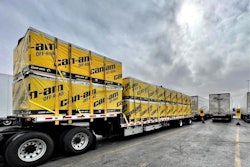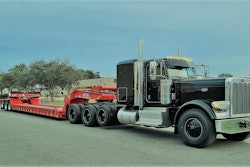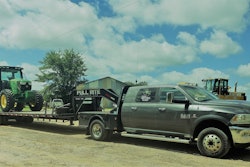 It was a sporadic market for oilfield-dedicated hotshots in Texas in the first part of 2020. This 2015 Ram one-ton was mostly idled for months as drilling rig work dried up, said its contract driver, Rick Renaud.
It was a sporadic market for oilfield-dedicated hotshots in Texas in the first part of 2020. This 2015 Ram one-ton was mostly idled for months as drilling rig work dried up, said its contract driver, Rick Renaud.Before COVID-19, Victoria, Texas-based Rick Renaud’s business had been faring OK. He was a contract driver in a close associate’s hotshot one-ton, a diesel 2015 Ram dually outfitted with a flatbed and a gooseneck hitch with which Renaud sometimes pulled a trailer.
Per the traditional hotshot truck definition, he was mostly “on-call 24/7,” he said, for emergency loads with rates that reflected the need-it-now element. For some customers, $4 and more per loaded mile was the rule, with empty backhauls expected.
He hauled the smaller components of oilfield work, “drilling tools and mud motors and valves and lubricators,” he said. Even before the pandemic set in, things had been slowing as the occasional large 3PL had cut its rates to push into the niche. Then the oil pricing war between Russia and Saudi Arabia added insult to injury, causing Texas crude oil prices to plunge, even briefly into negative territory in April futures trading.
Contrary to Renaud and other experienced oilfield hands, three businesses profiled in the stories that follow in this series have turned to hotshot work just within the past two years. They illustrate some differences in their approach to customers, equipment, insurance costs and more.
Hotshot has long been an attractive trucking niche due to its relative ease of entry and earning potential, and that’s mostly still true. Though the pandemic and other economic factors have hurt parts of the hotshot sector, just as they have other trucking segments, some of these savvy operators show that there’s good money to be made even in turbulent times.
Renaud’s work is emblematic of trucking hotshot work in that the term originated in the oilfield, where the pressure to keep drilling rigs operating virtually nonstop created a demand for 24/7 transport service.
[Related: Building the foundation: Knocking on doors with a Texas-based hotshot trucker]
“It’s not just all about small trucks,” owner-operator Joey Terra explained. “The first company I was a driver for [in the oilfield] had 18-wheelers that were hotshots. You may need a big truck for a big part, something bigger than a one-ton could handle.” Today, though, hotshot refers to a much broader subset of hauling of all sorts of freight, mostly under the umbrella of the equipment doing the hauling — a Class 3-5 truck, often a one-ton, three-quarter-ton or ton-and-a-half pickup, as Terra suggested.
Most hotshot owner-operators run with motor carrier authority, many of them avoiding an eggs-in-one-basket approach of a single broker, shipper or freight niche. Terra, not far from Renaud in Marshall, Texas, in early July was under a load on his 2015 Ram and 7-foot bed – a flatbed built onto the cab and chassis rather than a pickup body – of two air-conditioning units intended for a modular building. He often enough pulls a 40-foot flatbed trailer with two 12,000-pound-capacity axles, but he takes advantage to trim weight and save when he can. The load paid “almost $3.40 a mile, just to put them on the bed of my truck,” said Terra.
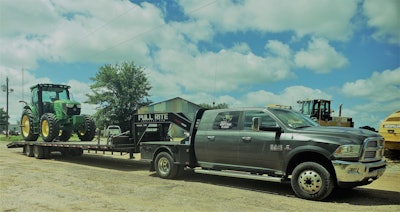 Owner-operator Joey Terra’s 2015 Ram and 40-foot Pull Rite flatbed trailer with two 12,000-lb.-capacity axles.
Owner-operator Joey Terra’s 2015 Ram and 40-foot Pull Rite flatbed trailer with two 12,000-lb.-capacity axles.Owner-operator Debbie Desiderato transitioned back to flatbed hotshot recently after years pulling a 53-foot van. “Tolls are less, and I’m getting 12 mpg loaded — that’s double what I got in my semi. It’s easy-peasy — I can do vehicles, general freight and weird stuff” that can pay very well.
Pennsylvania-based owner-operator Jason Kendall averaged 10 mpg pretty regularly in each of his two hotshots hauling cars — often picked up in remote places. “Taking those odd jobs you’d never be able to get a Class 8 truck to take,” he said, enhances his profitability.
[Related: Hotshot truckers' insurance costs: Only a little less expensive]
The coronavirus lockdowns in 2020 basically put a stop to the operation Renaud drove in, and the business was contracted to Stone Trucking. Renaud began receiving special COVID-19 unemployment benefits, then learned that Stone Trucking would close July 1 last year, he said. Stone’s parent company, Action Carriers, was reacting to rising insurance costs, among other factors, he added.
Profiles of the following three operations make up the bulk of the remainder of this series (click through links in the cutlines under these images for their stories):
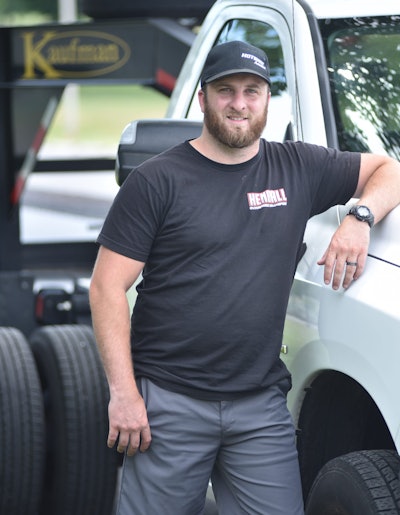 Jason Kendall’s Kendall Enterprises: Car haul for the long haul.
Jason Kendall’s Kendall Enterprises: Car haul for the long haul.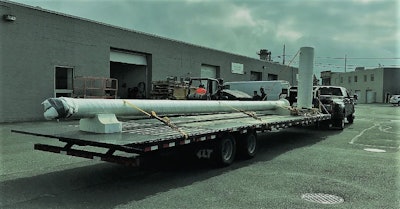 Debbie Desiderato’s Walkabout Transport: Hotshot as downsized pandemic refuge.
Debbie Desiderato’s Walkabout Transport: Hotshot as downsized pandemic refuge.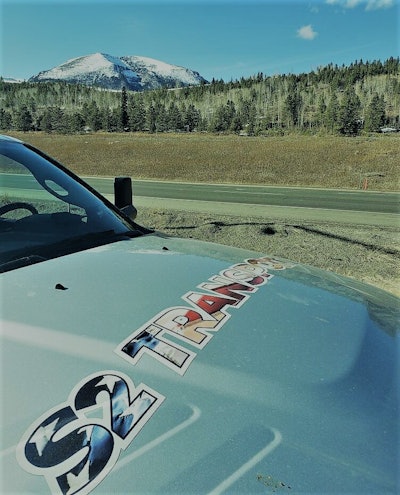 S2 Transport: Small fleet stepping stone to bigger things.
S2 Transport: Small fleet stepping stone to bigger things.

